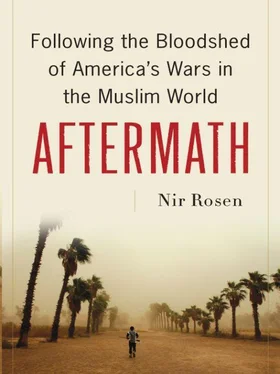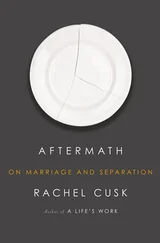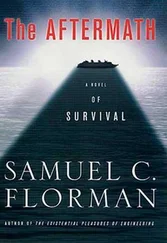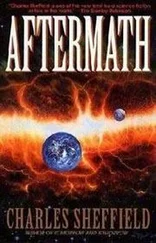The occupation was based on a vision that saw Iraqis as a collection of atomic sects. Even before the invasion, theorizers of the “new Iraq” such as Kanan Makiya sought to de-Arabize the country. They blamed Arabism for the ills of totalitarian Iraq and proposed ideas such as “regional autonomies” and federalism as alternatives to a centralized, top-down, state-sponsored identity. Prescient critics such as Azmi Bishara warned that if Iraqis ceased to be “Arab,” then they would simply adopt more primordial forms of identity that would not necessarily be less violent or damaging.
After the war Iraq was treated as a tabula rasa experiment, and the political institutions built by the occupation reflected these views. They were devised to undermine the idea of Iraqi nationalism that Saddam had tried to promote, and to correspond to the vision of Iraq as a trinational state. This further politicized sectarian forms of identity, making them the only avenue of political action in Iraq. Several incompatible views of Iraqi identity were promoted by the occupation and postwar Iraqi politicians: Iraq as a tribal society; Iraq as a liberal, multicultural polity, where a concept of Iraqi citizenship trumps other loyalties (promoted by Ahmad Chalabi, Kanan Makiya, Mithal al-Alousi, and other “liberal” politicians); Iraq as a collection of nations or sects. The last definition was the most potent. Electoral laws and sectarian violence played the largest role in cementing this vision. In addition, the Americans divided Iraq into winners and losers, and they soon made it clear to the Sunnis where they fell into that divide.
In late 2003 an American NGO arranged a meeting in the Green Zone between several representatives of Falluja’s major tribes (such as the Albu Eisa, Jumaila, Albu Alwan, and others) and representatives of the Coalition Provisional Authority. “We had a lot of hopes of big and meaningful projects that could show a more attractive future for the people,” said one of the organizers. “We were talking with the sheikhs about good projects for the city, and they were really interested in the business centers and the links with the foreign companies. They told us the ‘troubled kids’ were few and they could arrange with the bigger tribal leaders to control the situation as long as they can have something to show their people. Their other concern was about the Shiite domination. They said they would really appreciate it if the Americans promised to protect the city from the Badr Brigade [the huge Iranian-trained Shiite militia of the Supreme Council for the Islamic Revolution in Iraq, or SCIRI]. They were really concerned about this point. The CPA attended the meeting, but they seemed so uninterested. I can say that their general feeling was, ‘You lost, and we don’t care about you.’ To everyone’s disappointment, the main representative of the CPA left fifteen minutes into the meeting. The sheikhs left to Falluja knowing they would have nothing to offer there. One of them was kidnapped and killed a couple of months after the meeting, and the other was attacked and his son was killed. One of them got connected to the armed groups and went on his own.”
In the spring and summer of 2004, I met many fighters and leaders of the resistance in Falluja. They believed they were defending their city, the country, and their religion. They clashed frequently with their rivals, the Al Qaeda-inspired jihadists and foreign fighters who had based themselves in the Anbar province and threatened to undermine the power of the more conservative Fallujan leadership. Many Sunnis had no alternatives even as the Al Qaeda men undermined the Anbar establishment and imposed a reign of terror, which not only bloodied communities but destroyed infrastructure, institutions, and businesses there. Their traditional leadership was more pragmatic and wasn’t ideologically opposed to an accommodation with the Americans at that time, though they had yet to be chastened by Shiite militias into reducing their expectations.
A FOREIGN MILITARY OCCUPATION is a systematic imposition of violence on an entire population. Of the many crimes committed against the Iraqi people, most have occurred unnoticed by the American people or the media. Americans, led to believe their soldiers and marines would be welcomed as liberators, still have little idea what the occupation is really like from the perspective of Iraqis. Although I am American, born and raised in New York City, I came closer to experiencing what it feels like to be Iraqi than many of my colleagues. I often say that the secret to my success as a journalist in Iraq is my melanin advantage. I inherited my Iranian father’s Middle Eastern features, which allowed me to go unnoticed in Iraq, march in demonstrations, sit in mosques, walk through Falluja’s worst neighborhoods, sit in taxis and restaurants, and look like every other Iraqi. My ability to blend in also allowed me to relate to the American occupier in a different way, for he looked at me as if I were another “hajji,” the “gook” of the war in Iraq.
I first realized my advantage in April 2003, when I was sitting with a group of American soldiers and another soldier walked up and wondered what this hajji (me) had done to get arrested. Later that summer I walked in the direction of an American tank and heard one soldier say about me, “That’s the biggest fuckin’ Iraqi [pronounced “eye-raki”] I ever saw.” Another soldier, who was by the gun, replied, “I don’t care how big he is, if he doesn’t stop movin’ I’m gonna shoot him.”
I was lucky enough to have an American passport in my pocket, which I promptly took out and waved, shouting, “Don’t shoot! I’m an American!” It was my first encounter with hostile checkpoints but hardly my last, and I grew to fear the unpredictable American military, which could kill me for looking like an Iraqi male of fighting age. Countless other Iraqis were not lucky enough to speak English or carry an American passport, and entire families were killed in their cars when they approached checkpoints. In 2004 the British medical journal The Lancet estimated that by September of that year, one hundred thousand Iraqis had died as a result of the American occupation; most of them had died violently, largely from American airstrikes. Although this figure was challenged by many, especially partisan backers of the war, it seemed perfectly plausible to me based on what I had seen during the postwar period in Iraq. What I never understood was why more journalists did not focus on this, choosing instead to look for the “good news” and to go along with the official story. I never understood why more journalists did not write about the daily Abu Ghraibs that were so essential to the occupation.
The occupation pitted Iraqis against one another as old scores were settled and battles for resources and Iraq’s identity raged. Sectarian differences that had previously been suppressed are now exaggerated. This book, which begins by looking at the events and trends that led to the outbreak of civil war in Iraq, tells the story of what happened to Iraq as it descended into the nightmare of sectarianism and militia fighting between Sunnis and Shiites in the aftermath of the U.S. invasion. And it tells the story of what happened after “the Events,” or “the Sectarianism,” as Iraqis called their civil war, much as the conflict in Northern Ireland is called “the Troubles.” It is a story of Iraq after dark, so to speak, away from the glare of the Western media and far from U.S. patrols and, most important, away from the elite politics of the Green Zone. I focus on the Iraqi “street,” because after the overthrow of Saddam, power was distributed there.
I first came to Iraq when I was twenty-five years old, a former nightclub bouncer with a skill in languages who hoped to remake himself as a journalist. I have been traveling and living in Iraq ever since, and the longer I have stayed the more interested I have become in what Martha Gellhorn described as the “view from the ground,” a narrative of Iraq that transcends the clichés of much journalism about the region. As a new Iraq emerges, I hope this book will serve as a reminder of the terrible suffering millions of civilians have endured. This book also attempts to understand how the civil war in Iraq ended and what role Americans played in that. More specifically, it is an attempt to understand the role of the “surge,” the term for the increase in American troops that has become a blanket term for a change in the American strategy and military operations in Iraq (and later in Afghanistan). That the Americans began to have more influence on the Iraqi street during the “surge” is reflected in the chapters that cover this period, where they play a larger role in my narrative, and I show that the power dynamic between the Americans and the street was never as simple as one between an occupier and a puppet. For the surge also marked the period coinciding with the cease-fire of the main Shiite militia and the simultaneous cease-fire of most Sunni militias, who changed sides and allied themselves with the Americans. I was a surge skeptic, expecting the worst. I feared that the civil war in Iraq might become a regional war, and I did not immediately see the importance of the new American approach or foresee the role the serendipitous change in Iraqi dynamics would play. The civil war burned itself out faster than I expected, and the Americans went from being an oppressive occupying force, to a neglectful occupier allowing Iraqis to slaughter one another, to a power broker and quasi peacekeeper, and finally, perhaps, to an uneasy strategic ally and partner.
Читать дальше











